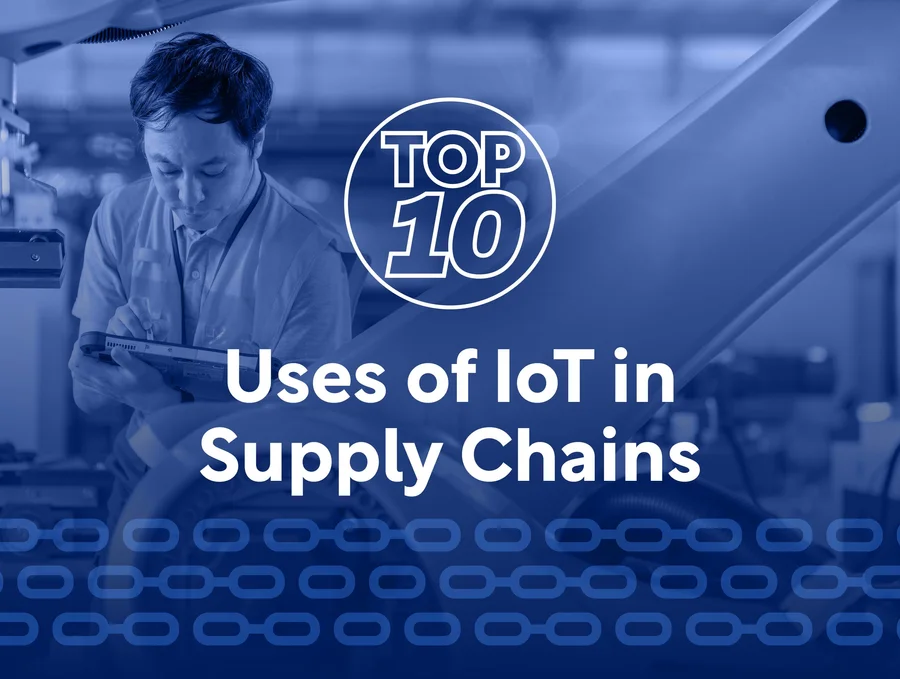In today’s fast-paced world, businesses need to adopt innovative technologies to stay ahead of the competition. The Internet of Things (IoT) has emerged as a game-changer in supply chains, offering new ways to improve efficiency, reduce costs, and enhance customer satisfaction. But how exactly does IoT work, and what are its most impactful uses in supply chain management? Here are 10 ways IoT is transforming logistics and supply chains across industries.
1. Real-Time Tracking of Goods
One of the most obvious benefits of IoT is real-time tracking. IoT-enabled devices such as GPS sensors and RFID tags allow businesses to track the exact location of their products in transit. This not only boosts visibility across the supply chain but also helps reduce delays, improve delivery accuracy, and cut down on theft or loss. Real-time tracking provides both businesses and customers with peace of mind, as they can monitor the progress of shipments.
2. Predictive Maintenance for Equipment
Maintaining machinery and vehicles in a supply chain is essential to avoiding costly downtime. IoT sensors can predict when a piece of equipment is likely to fail or require maintenance, allowing for preventative measures. This kind of foresight reduces the chances of unplanned disruptions, extending the life of assets and saving money on emergency repairs. The ability to plan maintenance schedules based on actual wear and tear ensures smoother operations.
3. Warehouse Management Efficiency
IoT can optimize warehouse operations by automating inventory management. Smart sensors can detect the stock levels of goods, ensuring shelves are always adequately stocked. In case of any discrepancies, such as misplaced items or inventory shortages, IoT systems can alert warehouse managers. Furthermore, automated robots and drones can be used to move goods around, minimizing human error and speeding up the process.
4. Temperature Control for Sensitive Products
Certain goods, such as food and pharmaceuticals, require strict temperature control throughout the supply chain. IoT devices equipped with temperature sensors ensure that items are stored and transported at optimal conditions. If there’s a sudden fluctuation, businesses can immediately address the issue to prevent spoilage, reducing waste and improving product quality.
5. Fleet Management Optimization
Managing a fleet of delivery trucks or company vehicles is no easy task. IoT-powered fleet management systems allow businesses to track the location and condition of vehicles in real time. These systems monitor vehicle health, fuel efficiency, driver behavior, and even traffic conditions, which can significantly improve logistics, reduce costs, and ensure timely deliveries.
6. Demand Forecasting and Inventory Optimization
IoT can enhance demand forecasting by collecting and analyzing data from various sources, including consumer behavior, market trends, and weather patterns. By doing so, businesses can better predict product demand and optimize inventory levels, reducing both overstocking and stockouts. This not only saves money but also ensures that customers have access to the products they need when they need them.
7. Enhanced Asset Tracking
In addition to tracking goods in transit, IoT helps with managing physical assets such as machinery, tools, or containers. Sensors attached to these items can provide real-time data on their location and condition, preventing loss or theft. This is particularly valuable for businesses with a large inventory of high-value items.
8. Improved Quality Control
Quality control is vital in maintaining customer satisfaction and minimizing returns. IoT devices can monitor various parameters, such as weight, temperature, and humidity, to ensure products meet quality standards. Automated sensors can instantly detect any discrepancies, alerting workers to take corrective action before products reach customers.
9. Energy Management and Sustainability
Sustainability is becoming an increasingly important consideration in business operations. IoT can help monitor energy consumption across the supply chain, from warehouses to transportation. By identifying areas where energy use can be reduced, companies can cut costs and lower their carbon footprint, contributing to a greener, more sustainable supply chain.
10. Improved Customer Experience
Finally, IoT contributes to a better overall customer experience by enabling businesses to provide faster, more reliable service. With real-time tracking, predictive delivery windows, and automated inventory management, customers can enjoy a smoother, more seamless shopping experience. Enhanced visibility also allows businesses to proactively address issues and communicate effectively with their customers.
Conclusion
IoT is reshaping the landscape of supply chains across industries. By integrating connected devices and sensors into operations, businesses are gaining unprecedented visibility and control over their supply chains. Whether it’s improving tracking accuracy, reducing downtime, or optimizing energy consumption, IoT is proving to be an invaluable tool for enhancing efficiency and boosting customer satisfaction. As this technology continues to evolve, the possibilities for further improvements in supply chain management are endless.
Is your business ready to harness the power of IoT to transform your supply chain?






